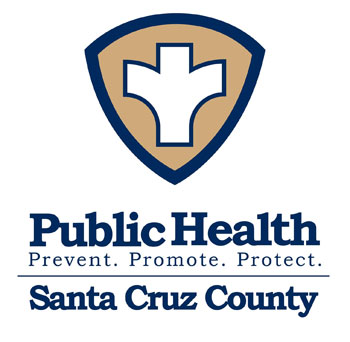By Jondi Gumz
Due to a dramatic increase in COVID-19 cases locally, Santa Cruz County is required to move back into the highly restrictive Purple Tier immediately.
Santa Cruz County is not alone ━ 41 counties encompassing the vast majority of California’s population are now in the Purple Tier, which downshifts business operations, and state regulators are poised to adopt new regulations to protect workers from COVID-19, the contagious coronavirus, on Thursday.
In the Purple Tier, restaurants, movie theaters, gyms, fitness centers and places of worship can only offer services outdoors. Businesses must have new restrictions in place by Tuesday, Nov. 17.

The case rate has jumped to 11 new cases per day per 100,000 population; before Halloween, the case rate was below 4 per day per 100,000.
To get back in the Orange Tier, the case rate would have to fall below 7 new cases per day per 100,000.
Since Friday, cases jumped from 1,890 to 1,980 in Watsonville and from 693 to 739 in Santa Cruz. Every community in the county saw new cases in three short days.
Besides gatherings of friends and family, COVID outbreaks have occurred at two nursing homes and one assisted living facility, where residents are elderly or have medical conditions, or both, putting them at risk.
The latest began Nov. 7 at the 149-bed Santa Cruz Post Acute, and spread from to four staff and 17 residents on Friday to nine staff and 29 residents as of Monday.
Before that, an outbreak at the 40-bed Maple House II assisted living in Live Oak spread to 10 staff and 14 residents, with one staffer hospitalized.
The first outbreak, at the 95-bed Watsonville Post Acute, spread to 21 staff and 50 residents, and 16 residents died.
Each facility has different ownership.
New Employer Rules
On Thursday, the California Occupational Safety and Health Standards Board is poised to adopt an emergency regulation aimed at protecting workers across California from exposure to COVID-19.

Father and son Richard (right) and Mark Boolootian enjoy some drinks at Coasters inside Boardwalk Bowl. Richard, who lives in an assisted living facility which suffered a COVID-19 outbreak last month, is currently recovering. ● Photo Courtesy of Mark Boolootian
The proposed regulation, which would be put into effect by the state Division of Occupational Safety and Health, would require all employers to:
- Assess workplace hazards and create a written COVID-19 prevention program, allowing for employee participation;
- Correct COVID-19-related hazards in the workplace;
- Identify and notify all workers exposed to COVID-19-positive individuals;
- Provide testing free to employees in the event of COVID-19-positive cases in the workplace;
- Train employees on COVID-19 prevention;
- Mandate and enforce the wearing of face coverings in the workplace;
- Provide personal protective equipment free where needed; and
- Adopt safety measures in housing and transportation provided by the employer.
To view the meeting, which begins at 10 a.m., see www.dir.ca.gov/oshsb/mtgsch.html. To comment, email OSHSB@dir.ca.gov.
The regulation comes in response to a May 20 letter from the Worksafe of Oakland and the National Lawyers Guild Labor & Employment Committee. They sought protection for “essential” workers, those working but not deemed essential, those working to support their families, those working because they feared they would lose their job and those who would return to work fearfully as the economy opened up.
“Without specific occupational health and safety measures… Californians will die unnecessarily,” the letter read, calling for specific requirements to give employers clarity on how to protect workers.
Board staff noted the disproportionate impact on Latino communities but suggested a focus on businesses in Los Angeles County, where 40% of the cases and half of the deaths have occurred, or an emphasis on industries with a disproportionately high number of cases.
However, Cal/OSHA agreed with the petitioners that an emergency regulation is warranted. Existing regulations protect workers in health services, homeless shelters and correctional facilities but not workers in meat and poultry processing, food processing, agriculture, garment manufacturing, warehousing, public transportation, and retail stores, where outbreaks have taken place.
The proposed regulation is similar to what the petitioners proposed, with the late addition of requirements for physical distancing and providing masks for workers in employer-provided housing and distancing, masks and ventilation in employer-provided transportation to work, including shuttles, ride-share vans and carpools.
Thanksgiving Guidance
“The sharp rise in COVID-19 cases is very concerning,” said Jen Herrera, Santa Cruz County’s chief of public health. “It is critical that everyone follow social distancing guidelines and not gather in groups as we head into the holidays.”
The agency also released Guidance for the Prevention of COVID-19 Transmission for Gatherings – timely in light of Thanksgiving on Nov. 26.
The safest way to gather is to spend time with people in the same household, gather virtually, or gather outdoors, according to Santa Cruz County health officials.
Anyone experiencing COVID symptoms, even mild, should be tested, health officials said, adding that if you receive a negative test, you should finish quarantining and not end early – typically 14 days after your last close contact with a person who has COVID-19.
Testing locations can be found at www.santacruzhealth.org/testing. Contact your medical provider if you have questions about your quarantine or isolation period.
For more information on the State framework, visit https://covid19.ca.gov/safer-economy/.
For local information on COVID-19, go to www.santacruzhealth.org/coronavirus, call 211 or text “COVID19” to 211211. Residents may also call (831) 454-4242 between 8 a.m. and 5 p.m. Monday through Friday.
●●●
COVID Cases as of Nov. 16
| Aptos | 150 |
| Ben Lomond | 28 |
| Boulder Creek | 30 |
| Capitola | 82 |
| Felton | 33 |
| Freedom | 199 |
| Santa Cruz | 739 |
| Scotts Valley | 91 |
| Soquel | 75 |
| Watsonville | 1,980 |
| Unincorporated | 38 |
| Under Investigation | 85 |
| Total | 3,530 |
Source: santacruzhealth.org
●●●
Source of Exposure by Occupation
| Retired or not employed, household | 32% |
| Construction/maintenance/natural resources, household | 18% |
| Sales and office, household | 7% |
| Management/business/science/arts, household | 6% |
| Service occupation, household | 6% |
| Construction/maintenance/natural resources, community acquired | 4% |
| Retired or not employed, community acquired | 4% |
| Retired or not employed, travel | 2% |
| Management/business/science/arts, travel | 2% |
| Management/business/science/arts, community acquired | 2% |
| Retired or not employed, close contact | 2% |
| Sales/office, close contact | 2% |
| Sales/office, community acquired | 2% |
| Construction/maintenance/natural resources, travel | 2% |
| Construction/maintenance/natural resources, close contact | 1% |
| Management/business/science/arts, close contact | 1% |
| Management/business/science/arts, healthcare setting | 1% |
Cases were than 1% for: Service workers via travel, a healthcare setting, and community-acquired; for retirees in a healthcare setting, and sales and office workers via travel.
Source: santacruzhealth.org

